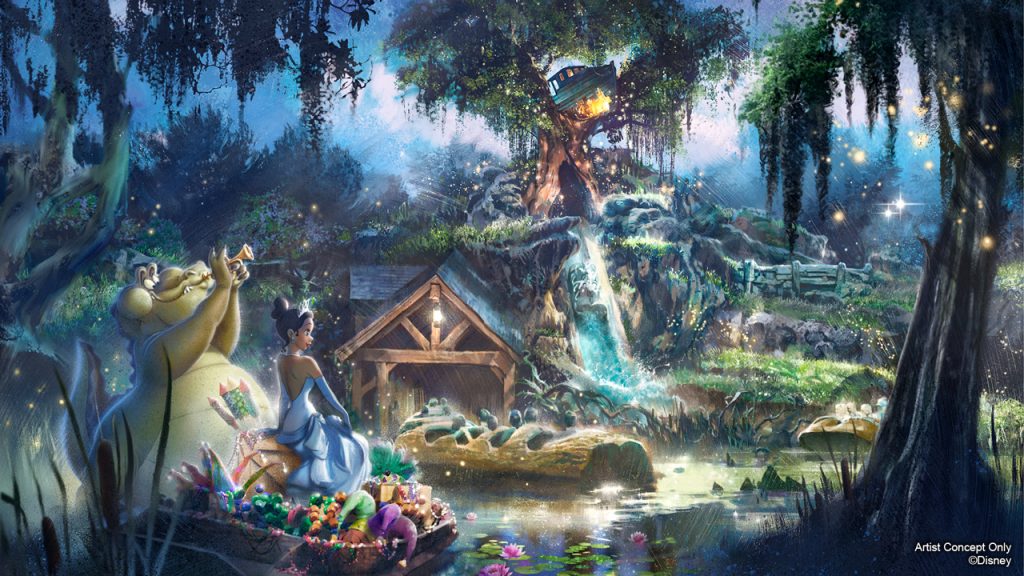Like several closed attractions before it — Mr. Toad’s Wild Ride, 20,000 Leagues Under the Sea, The Great Movie Ride — Splash Mountain is based on a movie that few people remember, and even fewer have seen. Disney’s 1946 film Song of the South was based on the Uncle Remus stories by Joel Chandler Harris. Harris was a journalist in the mid-to-late 1800s, and occasionally published these stories while working at a major southern newspaper.
Harris had heard these stories from African-American slaves while apprenticing at a plantation. They were classic morality fables in the vain of Aesop, and originated from a mix of old African, Native American, and Southern folktales. Harris spent a lot of time with the slaves, and felt that these stories deserved to be shared with a much larger (White) audience.
So he created the fictional character of Uncle Remus, a kindly, old, Black plantation worker during the post-Civil War Reconstruction Era, who told stories to the other Black plantation workers’ children, as well as some of the White children from and around the plantation. Remus was wise, though uneducated, and he and the animal characters he told stories of spoke in a stereotypical Gullah dialect that would continue to be used to mock and caricature African-Americans from before the time of their publication until the mid-20th Century, around the time of the Civil Rights Movement, and ironically, Song of the South’s production.
Walt Disney had grown up reading and hearing these stories and, like many other stories he grew up on, felt that they would make a great family movie. Not satisfied with just adapting the relatively innocuous tales of Br’er Rabbit, Br’er Fox, Br’er Bear, et al, into animated shorts like he would later do with Winnie-the-Pooh, Walt wanted to depict Uncle Remus himself, and the romanticized version of the Old South in which he lived.
Setting the live-action segments of the film on a Georgia plantation, Song of the South barely skirted the slavery issue by setting the time period as vaguely Reconstruction Era like the stories it’s based on. (Although, on-screen, it is never explicitly stated whether Remus and his fellow Black servants were slaves or “indentured servants”, but it hardly matters, really.) Ignoring the recommendations of African-American advocates at the time, Walt insisted upon using the eye dialect from the stories and even included scenes of the workers singing happily while they worked.
The animated segments, the only enduring parts of the movie, both culturally and critically, told three stories focusing on Br’er Rabbit, and his adversaries, Br’er Fox and Br’er Bear. One of these stories involves Br’er Rabbit’s run-in with a “tar-baby”, a doll literally made out of tar in Harris’ story, but also a derogatory slang term for an African-American child. Another segment features live-action Uncle Remus actor James Baskett singing Zip-a-Dee-Doo-Dah with his animated animal friends, using the “Zip Coon” vernacular of old blackface minstrel show songs.
The movie languished in controversy and relative obscurity throughout the Civil Rights Movement, seeing irregular re-releases compared to other Disney classics, and even being publicly denounced by Walt Disney Productions as long ago as 1970. Its final official release was in 1986, shortly after Michael Eisner and Frank Wells took over running the company. Coincidentally, around the same time, Imagineer Tony Baxter was looking for a theme for a proposed flume ride in Disneyland, as well as a way they could utilize dozens of animal Audio-Animatronics from the America Sings show that was soon to be closing.
All three things came together (along with the title from the movie Splash, the success of which Eisner had been trying to capitalize on) to create Splash Mountain, a flume ride based on Song of the South, minus the live-action characters, singing slaves, and “tar-babies”, but keeping the racist dialects and signature song.
Many of these aspects have been ignored, forgotten, or overlooked over the years, but recent events have exposed the racist undertones — whether intentional or unintentional — of the attraction, its source material, and its source material’s source material. It’s a lot harder nowadays to hear Br’er Fox telling Br’er Bear “You’z makin’ a foo’ out yo’self, izwat you doin’!” without picturing a minstrel in blackface, or to sing along with “Zip-a-dee-doo-dah/Zip-a-dee-ay” without hearing “Zip-a-duden duden duden/Zip-a-duden day” from Turkey in the Straw.
That may be fine for some of us, but Disney World is supposed to be a happy place for everyone. And just like updating Pirates of the Caribbean to remove the lust and vanity and replacing it with greed and gluttony has made that attraction less unappealing for some, removing Song of the South from Splash Mountain and replacing it with The Princess and the Frog will make it more appealing to others.


